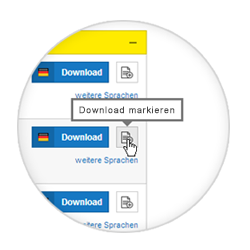Successful recycling with VEGA sensors
Pyrum Innovations AG in Saarland is a model company when it comes to recycling, environmental protection and green innovation. By means of a special pyrolysis technology, used tyres from cars, trucks and bicycles are processed to produce oil, gas and recovered carbon black (rCB) as new recyclable materials. Pyrum relies on level and pressure sensors from VEGA to ensure safe and reliable processes in its state-of-the-art industrial plant.
What raw materials are contained in the rubber?
Three million tonnes of discarded tyres are collected every year in Europe alone. Until now, most of the rubber ends up in cement works, where the material is incinerated. For some years now, Pyrum has been doing everything it can to recover the valuable raw materials contained in waste rubber. In two reactors – a third is currently under construction – the pyrolysis of shredded old tyres takes place around the clock. In the absence of oxygen and at high temperatures, the granulate is broken down into
- coke (48 percent)
- oil (32 percent) and
- gas (20 percent
Where does pyrolysis take place?
The pyrolysis process takes place in a 25-metre-high reactor tower. There, the granulated waste goes through a variety of process steps spanning a total of five levels. It’s important that the correct dosages are adhered to and that pressures and temperatures are constantly monitored and controlled. This prevents viscous lumps of material from forming and contaminating or, in the worst case scenario, clogging the pipes.
What is required of the process technology?
The company uses the very latest process technology in the reactor tower. It ensures intelligent communication between the components involved – and thus process stability. Many VEGA level and pressure sensors play a key role in the process. Because “if the operation is not monitored 100 percent reliably, even the best processes won’t help us,” says Christian Maas, chief ICA engineer at Pyrum. Besides being extremely reliable, VEGA measurement technology scores points for its simplicity. “Plug in the sensor, then parameterise it via the control system, and you’re done” – VEGA instruments meet this requirement with no problem.
How important are sensors for Industry 4.0?
The Pyrum plant is setting new standards in digitalisation. And the measurement technology deployed is living up to these new standards as well. The ICA team has already set its sights on the next level of efficiency: These digital models that deliver better process data insights could eventually replace previously necessary measuring points. “The basic building blocks for this are reliable sensor technology as well as suitable communication and digitalisation concepts.” explains Christian Maas.
Where exactly is the VEGA measurement technology used?
The measuring instruments are positioned along the entire recycling process, ensuring efficient workflows within the various operational steps. They can also be found in the reactor, at the heart of the whole processing facility, which Pyrum holds several international patents on. There, VEGA measuring instruments monitor and diagnose the reactions and make sure that they are taking place within the prescribed limit levels and pressure ranges.
Example: The pressure transmitter VEGABAR 83, which monitors the gas pressure inside the reactor. The condensation stages and pressures within the condensate cycles must also be precisely controlled. If deviations occur, proper separation of the valuable oil is no longer guaranteed, which can lead to contamination of the product. “The measurement technology must deliver reliable results even under difficult process conditions,” emphasises Maas.
What are the main challenges in coke production?
Pyrolysis coke is a much sought-after raw material. Before it can be further processed, it has to be cooled down from 550 °C to ambient temperature in a controlled manner. It is then fed into the coke mill, where it is ground ultra-fine and pelletised into recovered carbon black. Multiple VEGA measuring instruments monitor the various process steps:
- VEGABAR 83 pressure transmitters and the VEGAFLEX 86 radar sensors continuously measure pressures and levels to ensure that the cooling systems are operating at optimum capacity. The sensors are designed for high temperatures and use in harsh environments. .
- The VEGASWING 61 vibrating level switches reliably monitor point levels, which are often in safety-related applications in explosive atmospheres.
And what are the valuable recovered materials used for?
The raw materials produced are in great demand from major chemical and tyre industries, as well as many others.. They make a significant contribution to sustainability: According to Pyrum, the carbon footprint of new tyres can be reduced by 80 percent by using recovered carbon black. And with its particle size of less than 10 µm diameter, recovered carbon black also serves as a base material for paints and varnishes, for example. VEGA measurement technology is contributing to innovative recycling methods and a more sustainable economy.
Related industries

Environment and recycling
Products
Export this article
Download as PDFShare this article
Comments ({{comments.length}})
{{getCommentAuthor(comment, "Anonymous")}} {{comment.timestamp | date : "dd.MM.yyyy HH:mm" }}
{{comment.comment}}








